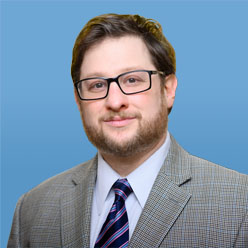October 4:
The Dali Lama has scrapped plans to visit South Africa after his visa request was denied, the New York Times reports. The exiled Tibetan spiritual leader had expected to visit South Africa this month to attend the birthday of Archbishop Desmond Tutu and give several public talks. The decision coincided with South African vice president Kgalema Motlanthe’s visit to China, where he signed multiple trade and development agreements. In response, Archbishop Tutu lashed out at the South African government, President Jacob Zuma, and his ruling African National Congress (ANC) party. “Mr. Zuma, you and your government don’t represent me. You represent your own interests.” Tony Ehrenreich, the leader of Cosatu, a powerful coalition of trade unions, also criticized the ANC for allowing China to influence South Africa’s foreign policy: “Even though China is our biggest trading partner we should not exchange our morality for dollars or yuan.”
[Editor’s Note: Beijing considers the Dalai Lama, a subversive “splittist” agitator. However, during a trip to the Labrang Monastery in Xiahe, Gansu this month the editor personally witnessed a large picture of the Dali Lama hanging in one of the temples. Although the guide did not mention the photo, he later said privately to the editor that the monks were allowed to post the picture in 2010 and that each monk is permitted a private photo of the exiled spiritual leader in his quarters.]
October 7:
Two Tibetan teenagers believed to be former monks at the Kirti Monastery in Sichuan have set themselves on fire to protest the Beijing’s Tibet policies and at least one of them has died. The two teenagers, identified as Choepel, 19, and Khayang, 18, set themselves on fire at midday, the New York Times reports. Choepel, who was expelled from the monastery in March after another self-immolation there, died at the scene. Khayang’s condition remains unknown. It was also unclear why Khayang had left Kirti, but his uncle was one of at least 20 people killed by Chinese armed forces in 2008. Since March, seven Tibetans in Sichuan have made similar attempts at self-immolation and all but one were monks from the Kirti Monastery, a restive religious institution at the heart of anti-China protests in 2008.
October 11:
Taiwan’s President Ma Ying-jeou has urged Beijing to pursue democracy and “face the existence of the Republic of China,” as the island celebrated its national day and the centenary of the 1911 Xinhai revolution that overthrew the Qing Dynasty. Stressing that the 1911 revolution launched by Sun Yat-sen to overthrow the Qing dynasty was a shared memory on both sides of the Taiwan Strait, Ma urged Beijing to remember the ideals of Sun. “The aspiration of our founding father Dr. Sun Yat-sen was to establish a free and democratic nation with equitable distribution of wealth,” he told thousands of local and foreign dignitaries in front of the Presidential Office in Taipei and called on Beijing to “courageously move in that direction,” saying it was the “only way for the two sides to shrink their gap.” Ma called on Beijing not to “deliberately cut out certain parts of history,” but to admit the “actual facts of history and face the existence of the Republic of China head-on. The Republic of China's existence is referred to not in the past tense, but in the present and has continued to flourish in Taiwan for more than six decades.” Ma said his government has pressed for improved cross-strait relations under the Republic of China’s constitution and the “1992 consensus,” which holds that each side adheres to the “one-China” principle, but each has its own interpretation of what “one China” means. “Within this framework, we are maintaining the status quo of ‘no unification, no independence and no use of force,’” he said in comments carried by Taiwan’s China Post.
October 14:
Heroin seizures at Hong Kong airport have surged threefold this year as traffickers try to use Hong Kong as a gateway to the mainland. In the first nine months of this year inspectors discovered 136.7kg of heroin with a street value of over $11.7 million, the most since 2002. So far, airport customs officers have arrested 55 drug couriers compared with 52 people and 37.8kg of heroin seized all last year. Customs’ officers said heroin traffickers were using Hong Kong as a gateway to the mainland, the South China Morning Post reports. The drugs originate in the “Golden Crescent” that spans Afghanistan, Iran, and Pakistan, and are smuggled to Hong Kong via two main routes through Africa and Southeast Asia, and then into the mainland. Last year, 49 of the 52 arrested traffickers concealed heroin in their bodies by swallowing pellets. This year only 26 cases involved internal concealment. Instead, traffickers use secret compartments in their luggage. This year over 20 mainland women were arrested in Hong Kong for drug smuggling and last year seven mainland women were arrested.
Want these sent to your inbox?
Subscribe
China Reform Monitor: No. 926
Related Categories:
China
